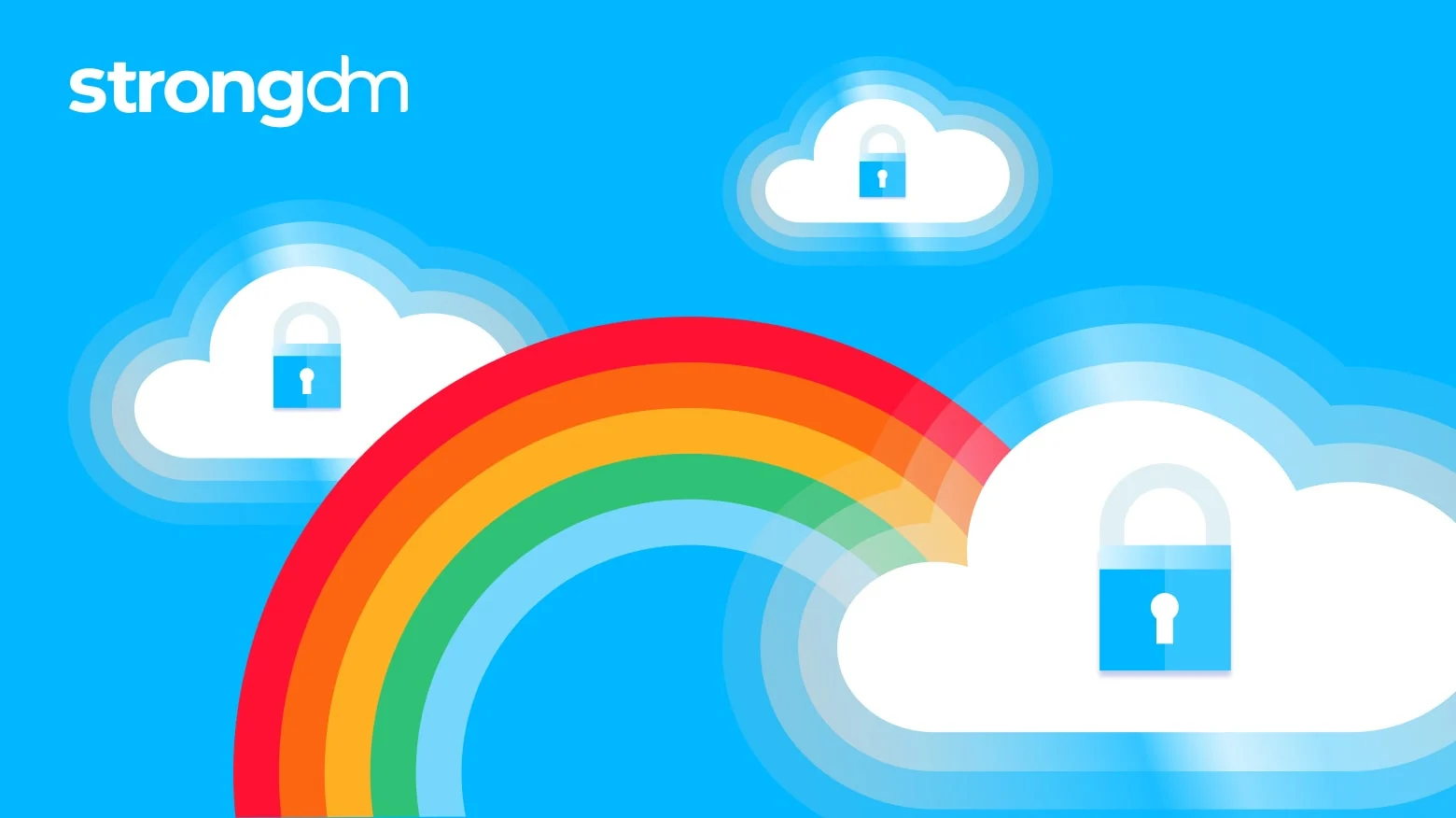
- Role-based, attribute-based, & just-in-time access to infrastructure
- Connect any person or service to any infrastructure, anywhere
- Logging like you've never seen

Summary: Cloud data protection is an increasingly popular element in an organization’s security strategy. In this article, we’ll explore what cloud data protection is, why it’s important, and the best practices to follow when migrating to the cloud. By the end of this article, you’ll understand the benefits and challenges of adopting a data security strategy for cloud environments.
What Is Cloud Data Protection?
Cloud data protection is a data security strategy that allows organizations to copy, host, and protect their data within public, private, or distributed cloud environments.
Companies are generating an unprecedented amount of data, which makes maintaining and expanding on-premises data servers unsustainable for many growing organizations. As companies scale, a cloud data security strategy helps them form the policies, procedures, and controls necessary to securely configure and manage cloud infrastructure, especially in multi-cloud and hybrid environments.
Cloud-based data protection involves creating copies of your data stored in the cloud. Alongside cloud data security, data protection practices ensure that both data at rest and data in motion are secure and that a copy of your data remains intact, even in the event of a breach.
What is data security in cloud computing?
It’s important to emphasize the difference between data protection and data security in cloud computing.
Data security refers to the overarching security procedures that a company applies to ensure that clouds are configured correctly and are secure against a potential breach to maintain high cloud data privacy standards. Data security in cloud environments focuses on the controls and policies to strengthen cloud storage security, limit access to the data stored there, and prevent a cloud data breach.
However, occasionally breaches happen, and that’s where data protection comes in. Data protection cloud services focus on ensuring a version of a company’s data is protected, preserved, and accessible in the event of a breach. This streamlines remediation because the data available in a cloud environment is regularly updated, helping companies avoid issues with data loss or damage.
Importance of Cloud Data Protection
As remote access to data becomes essential for many organizations, companies are turning to cloud data security to give users ongoing remote access to company resources while reducing the likelihood of data exposure. But, if and when a breach occurs, companies also need to know what data has been compromised or corrupted. Cloud data protection creates an accessible copy of that data in a cloud environment, making it an important part of a cloud data security strategy.
Data protection in the cloud plays a critical role in helping companies meet strict regulatory compliance standards, too. Now, many organizations are collecting data globally, which means these companies need to store data so they can meet various regions’ privacy laws and compliance requirements. By creating a backup of a company’s data, cloud data protection practices can help simplify legally required remediation efforts after a breach.
Benefits of Cloud Data Protection
Cloud computing and data security go hand in hand, allowing companies to maintain high data security and protection standards without the risks, expenses, and maintenance that come with on-premises data storage.
One of the primary benefits of managing data security in the cloud is visibility. Securing data in the cloud rather than on-premises allows your team to perform more comprehensive monitoring and observe your data more readily across your IT infrastructure. Plus, since the cloud has more consistent uptime than an on-premises solution, a copy of your data is always available, even after a network outage or breach.
Some of the other key benefits of data protection in the cloud include:
- Better data governance due to consistent access management policies and tools
- Easier auditing and logging to meet security and compliance regulations
- Enhanced data loss prevention by protecting data in different states
- A scalable, affordable solution to host growing data volumes without investing in more expensive hardware or on-site maintenance staff
- Many third-party cloud providers have strong security practices in place to help protect data, offering a shared security responsibility with the companies they partner with
Challenges of Cloud Data Protection
With on-premises data security, companies had full control over their data. Since many companies work with a third-party cloud provider to access cloud environments, these organizations inherently have less independent control than they would with on-site data centers and must build trusting relationships with their cloud data company, relying on them to maintain physical infrastructure, networks, and servers.
Some companies are lulled into a false sense of security by the shared security responsibility with their vendor, especially for private cloud environments. While moving to the cloud often means less downtime and maintenance, it also means adopting the right security tools to limit who can access data and protect a newly expanded security perimeter for both private and public cloud data protection. Without robust identity and access management (IAM) or observability tools, companies run the risk of unintentionally exposing their data.
Some of the other myriad challenges companies experience with data protection in cloud computing include:
- Struggling to find qualified cloud and data security professionals, which leads to incorrectly configured cloud environments and unintentionally exposed data
- Insufficient access management or credentialing, which enhances the likelihood of both insider threats and external attacks
- Security gaps from poorly managing the “front door” of the cloud with insecure APIs, gateways, and other interfaces
- Limited visibility and unexpected data exposure due to shadow IT, or unsanctioned application adoption and usage
3 Cloud Data Protection Best Practices
With so many aspects of data security in cloud computing to think about, it helps to pinpoint the cloud data security best practices that best support cloud data protection efforts.
Here are the top 3 cloud data protection best practices to focus on when moving to the cloud.
1. Identify and Classify Sensitive Data
Knowing what data you have is essential to effective data loss prevention. As companies develop their cloud security strategy, they may use different cloud environments for different types of data. Identifying and classifying sensitive data can help companies choose the best cloud environment for their needs and set up the right security tools for enhanced access control.
Remediating data breaches involving sensitive data can be difficult if that data isn’t properly classified first. Since cloud data protection is meant to help secure a copy of data in the event of a breach or data loss, it’s crucial to know where your most valuable data is and take the necessary steps to thoroughly protect it with strong access controls.
2. Adopt a Zero Trust Security Architecture
Since traditional perimeter security practices aren’t helpful when protecting cloud environments, it’s important to reexamine how your company looks at security when adopting cloud data protection. Introducing a zero trust security architecture—which emphasizes always verifying and authenticating user identity for access to company resources—can make cloud environments much more secure.
Plus, since a zero trust approach assumes that breaches are an ever-present threat, it uniquely supports gaps common in cloud computing data security. While adopting a full zero trust strategy can be challenging in complex environments, it’s an important step to powerfully enhance data protection efforts.
3. Review Your Shared Security Responsibility
As more companies adopt a multi-cloud environment, many may overlook that different cloud providers have different security practices and your company’s security responsibility won’t necessarily look the same in every vendor relationship. That’s part of why it’s so crucial that companies develop trusting relationships with their cloud providers.
When you start working with a cloud provider, review what security features they offer and what they view as part of their half of the shared security responsibility. This can help companies fill in the security gaps across complex environments and prevent breaches. Companies should also review the vendor’s process for what to do when a breach occurs and incorporate any additional communication steps into their own policy.
How StrongDM Simplifies Cloud Data Protection
Data protection management is impossible without strong access controls. That’s where StrongDM comes in.
StrongDM’s Zero Trust PAM platform simplifies access management by offering robust authentication, authorization, networking, and observability for your IT infrastructure—including cloud environments—through one centralized platform. StrongDM makes it easy to maintain full control over who has access to your sensitive data without multiple point solutions.
StrongDM seamlessly integrates with your tech stack to work alongside your existing security tools and protect everything from AWS and GCP clouds to Kubernetes clusters, databases, servers, and more. Plus, with moment-by-moment logging, auditing usage and detecting abnormal behavior is a breeze.
With StrongDM, your organization can store data in the cloud with peace of mind, knowing that your cloud data loss prevention strategy is sound.
Protect Your Cloud-Based Data with StrongDM
When you’re storing sensitive data in the cloud, security is an important consideration. Data breaches are an ongoing threat to organizations, and while there are tons of cloud security benefits, companies must also face the security gaps that accompany moving to the cloud to effectively maintain data privacy and prevent loss.
See how StrongDM can strengthen your cloud data protection strategy. Sign up for a 14-day free trial today.
About the Author
Schuyler Brown, Chairman of the Board, began working with startups as one of the first employees at Cross Commerce Media. Since then, he has worked at the venture capital firms DFJ Gotham and High Peaks Venture Partners. He is also the host of Founders@Fail and author of Inc.com's "Failing Forward" column, where he interviews veteran entrepreneurs about the bumps, bruises, and reality of life in the startup trenches. His leadership philosophy: be humble enough to realize you don’t know everything and curious enough to want to learn more. He holds a B.A. and M.B.A. from Columbia University. To contact Schuyler, visit him on LinkedIn.

You May Also Like




